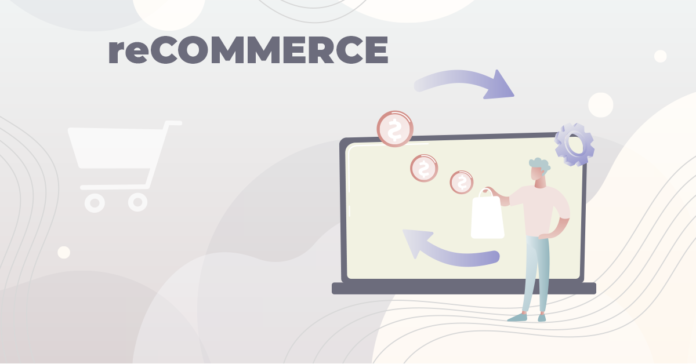ReCommerce is a proven mechanism that allows businesses to recoup a portion of the loss in sales from a discontinued item. It helps extend the life of a product and enhances a brand’s trustworthiness. Increasing consumer awareness will increase the popularity of ReCommerce. So, how can you make the most of it? Here are some tips! Read on and gain a deeper understanding of ReCommerce.
ReCommerce is a trusted mechanism to recover a portion of the loss in sales.
ReCommerce is based on trust. Consumers are likely to trust a ReCommerce vendor based on integrity, ability, and benevolence. While these qualities are important, they are not enough to gain a customer’s trust. In other words, trust is built by providing a quality experience. Therefore, a trusted ReCommerce vendor should be able to demonstrate these characteristics in all its dealings.
It helps extend the life of a product.
ReCommerce helps resell products and improves sustainability. It not only helps reduce landfills but also lowers overall production costs. Aside from helping the environment, resellers like Backflip help increase profits, which can be very helpful to a company or a household to earn extra money from unused items. To improve their ReCommerce efforts, companies should first evaluate their sustainability policies and competitors’ second-hand prices. The goal is to achieve a competitive market advantage.
ReCommerce campaigns can encourage consumers to adopt new behaviors and test new business models. Brands can also create tools to drive more value out of products. One example is Patagonia, which gives consumers tips for DIY repairs and credits for returned materials. It also enables the brand to create a community around its sustainability goals. It leverages PR, social media, and take-back events to connect people with environmental issues. As a result, those who value the environment will buy more products from brands that do the same.
It can work well for online businesses.
ReCommerce is a fast-growing phenomenon that can help you save money and the environment. According to a report from GlobalData, 118.8 million new re-sellers are expected to enter the resale market by 2020. It’s a convenient way to recycle products and boost your profits simultaneously. However, you’ll have to follow some rules regarding waste management. While it can work well for online businesses, it can raise questions for some brands. Besides saving you money and the environment, ReCommerce also helps you expand your brand worldwide. Another benefit of reselling second-hand items is that it doesn’t require much work on your part since the store owner doesn’t need to pay a commission to sell the resold products.
It boosts trustworthiness
One effective technique to boost trustworthiness is to provide a seamless shopping experience online. Many consumers trust brands more when they can easily contact the business person. While business owners can focus on creating great products and perks, trustworthiness in the online environment is just as important. Today, most people choose online shopping over traditional brick-and-mortar stores, and 67% of millennials do the same. The benefits of online buying outweigh the stress and hassle of physical shopping malls. In addition, a lack of trust among consumers means that many are reluctant to provide personal information online.
The ability to win trust is a key element to boosting the conversion rate. Increasing trust is an essential part of any conversion strategy. One study found that nearly half of respondents failed to trust a website with their credit card information during the checkout process. To boost conversion rates, retailers should create a trusting environment. A trust badge is a common way to increase trust: 48% of respondents cited trust badges as a major factor in building trust.
It reduces the environmental footprint.
ReCommerce is the trend of reselling previously-owned products to reduce the environmental impact of retail success. This practice is a great way for retailers to manage the costs associated with product returns and resale. It can also help manage the waste generated during manufacturing and transportation. The negative impact of NPS retail is especially significant for fashion retailers, as it accounts for around 10% of global emissions. In addition, consumers are becoming increasingly accustomed to disposing of perfectly good clothing. Also, the number of times people wear an item has decreased dramatically over the last 15 years. ReCommerce is not a solution to overconsumption, but it can help reduce the footprint.
ReCommerce is a rapidly growing market. This trend helps retailers reduce their environmental footprint and provide their customers with good-quality products at a lower price. Developing a ReCommerce strategy involves identifying your own business goals and determining the feasibility of reselling. Then, you can either build your platform or collaborate with existing players in the field. Once you’ve established your ReCommerce strategy, you’ll need to create a business plan outlining your sustainability goals, considering costs, and calculating ROI.













